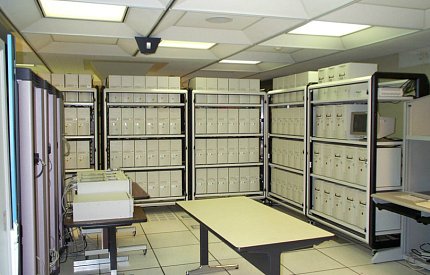Center for Information Technology Marks 25 Years

Way back in the 1990s, when grunge and hip-hop ruled the radio airwaves, and people were wearing a lot of flannel, computer and IT resources at NIH were spread among three main organizations: the Division of Computer Research and Technology, the Office of Information Resources Management and the Telecommunications Branch.
That all changed in March 1998 when NIH leadership combined these groups to form the Center for Information Technology (CIT). Alan S. Graeff was named CIT’s first director and NIH’s first chief information officer.
CIT’s original mission was to provide, coordinate and manage information technology, and to advance computational science, and since its founding, CIT has played a key role in developing information technology solutions for NIH.

In addition to developing web pages, conference registration systems and databases, CIT was responsible for key NIH enterprise systems like the Integrated Time and Attendance System (ITAS); the NIH Enterprise Common Services, including NIH Login and NIH Portal; the Contractor Performance System; the Human Resources Database; and the NIH Enterprise Ethics System.
CIT has continued to provide solutions that support both NIH business and administrative operations as well as scientific discovery. CIT-developed systems like nVision, ServiceNow, the NIH Enterprise Directory (NED) and FOIAXpress all support important aspects of the agency’s business and administrative operations.
Over the years, CIT dramatically improved the capacity and robustness of the NIH network—a fundamental utility for transmitting and sharing data—that serves more than 45,000 people in over 200 NIH facilities across Washington, D.C., Maryland, Arizona, Montana and North Carolina.
CIT also increased the capacity of Biowulf, NIH’s High Performance Computing resource, allowing researchers to pursue lines of inquiry that previously weren’t possible. Early in the pandemic, Biowulf prioritized Covid-19 research to accelerate discovery. Biowulf also played an integral role in achieving the first truly complete human genome sequence with no gaps as reported by the Telomere-to-Telomere (T2T) Consortium in April 2022.

Photo: Ben Chambers
Additionally, by forging relationships with industry leading service providers like Amazon Web Services, Google Cloud and Microsoft Azure, CIT has made cloud computing more accessible and affordable to the NIH community.
CIT’s Science and Technology Research Infrastructure for Discovery, Experimentation and Sustainability (STRIDES) initiative accelerates biomedical research by simplifying access, reducing costs and lowering technological barriers to cloud computing tools for NIH researchers.
When NIH moved to maximum telework at the beginning of the Covid-19 pandemic, CIT provided the collaboration tools and resources that allowed the bulk of NIH’s 45,000-person workforce to quickly transition to remote work and remain productive and in-touch with colleagues within NIH and external partners.
These are just some of the important ways that CIT has supported NIH over the years and made it possible for the agency to operate and conduct world-class research.
To view more notable events in CIT history, including events before 1998, see the center’s entry in the NIH Almanac at https://bit.ly/40quEFn. For more about CIT services, see the website at www.cit.nih.gov/.
